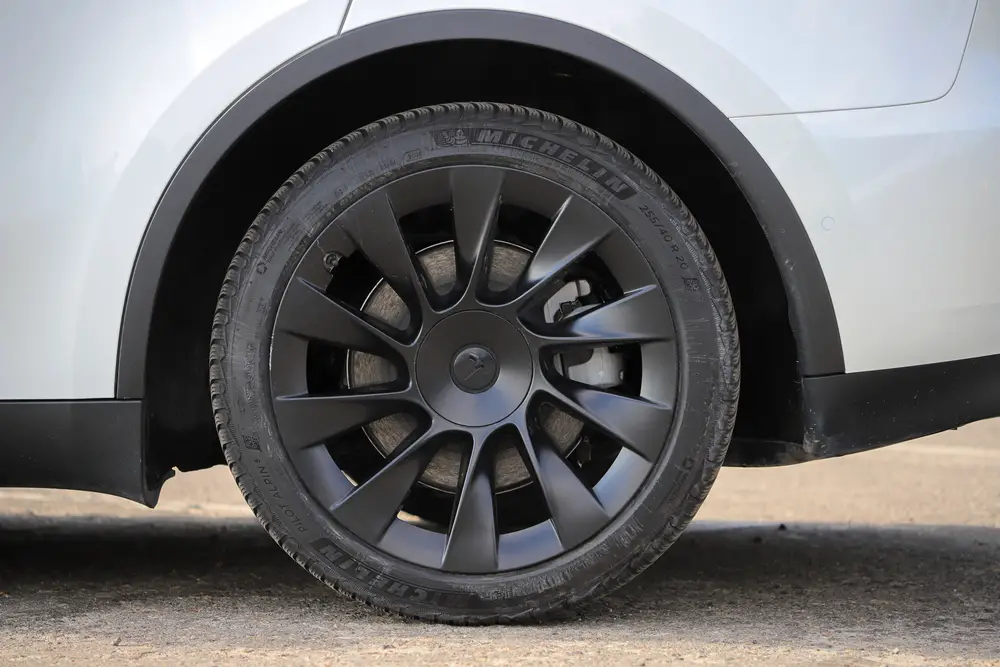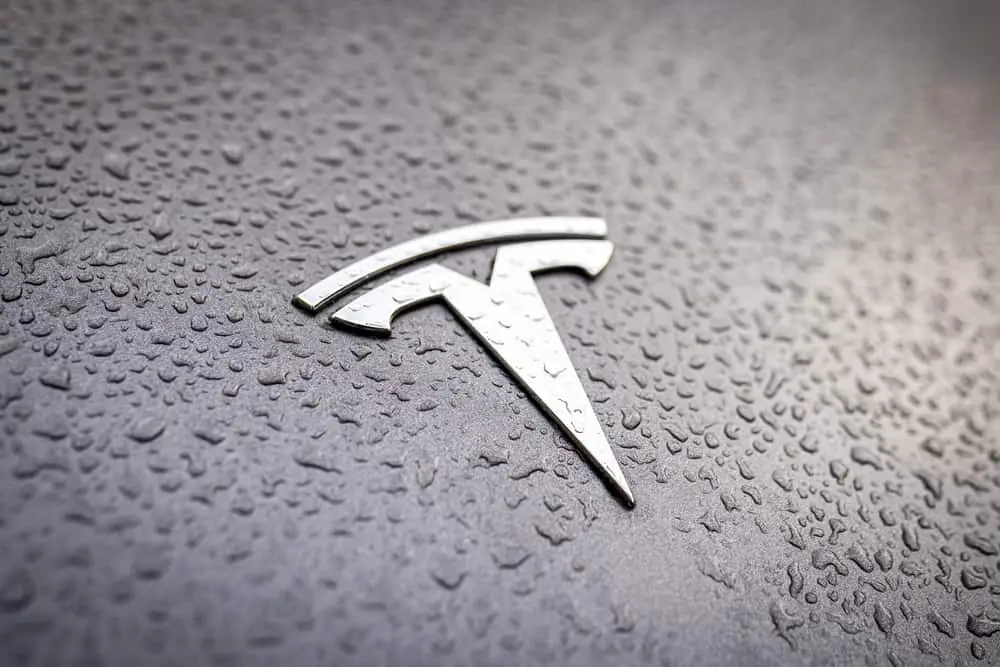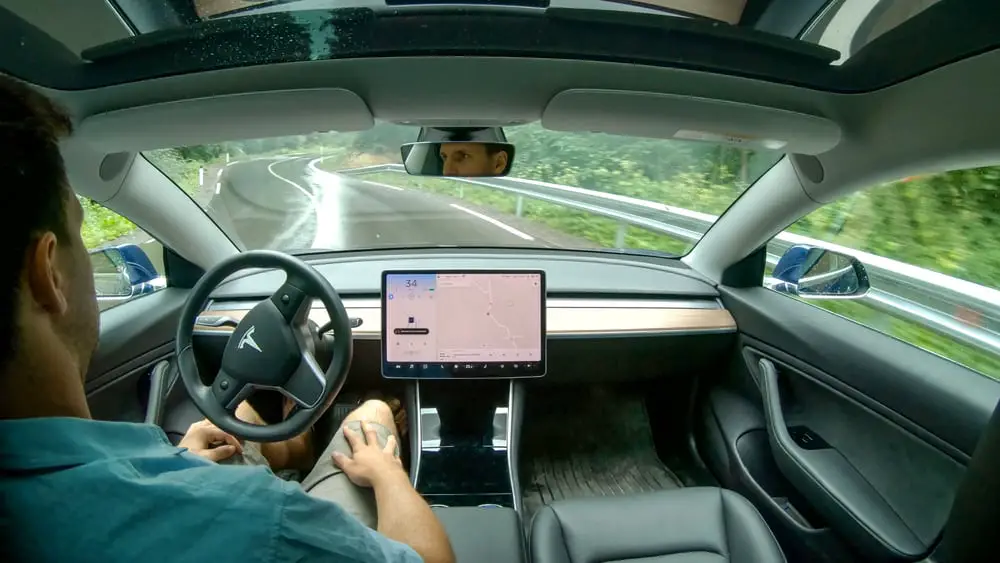Regenerative braking is a key feature in Tesla’s electric vehicles, playing a significant role in increasing energy efficiency and extending the vehicle’s range.
As drivers release the accelerator pedal and the vehicle slows down, regenerative braking captures the kinetic energy and converts it back into electricity, recharging the vehicle’s battery in the process.
Quick Anwer:
- Access Controls: On your Tesla’s touchscreen, tap on ‘Controls’.
- Navigate to Driving: From the controls menu, select ‘Driving’.
- Adjust Regenerative Braking: Under ‘Regenerative Braking’, select ‘Low’ to reduce its intensity. Tesla doesn’t allow completely turning off regenerative braking, but the ‘Low’ setting significantly reduces its effect.
Keep in mind that turning off regenerative braking may result in reduced efficiency and a potential decrease in the total driving range.
Understanding Regenerative Braking
Physics of Regenerative Braking
Regenerative braking works by converting the kinetic energy of a vehicle during deceleration back into electrical energy that can be stored in its battery. When an electric vehicle (EV) slows down, its electric motor switches to a generator mode. In this mode, the motor helps slow the vehicle by providing resistance while also converting some of the vehicle’s kinetic energy into electrical energy.
The generated electrical energy is then stored in the vehicle’s battery for later use, increasing the battery life and reducing the need for frequent charging. This process not only makes EVs more energy-efficient but also reduces the wear and tear on conventional braking systems, resulting in lower maintenance costs.
Regenerative Braking Technology
Regenerative braking systems use advanced electronics to manage and control the energy conversion process. This technology controls the amount of resistance the generator provides during deceleration, balancing the regenerative braking force with the friction braking from traditional brakes.
The system usually operates in parallel with conventional brakes, which are still necessary for situations when the vehicle needs to come to a complete stop or during emergency braking. In most electric vehicles and hybrid cars, the regenerative braking system will provide the majority of the braking force under normal driving conditions, prolonging the lifespan of traditional brakes.
Regenerative Braking in Electric Vehicles
Tesla vehicles, along with other electric and hybrid vehicles, employ regenerative braking technology to make them more energy-efficient. In a Tesla, the driver can adjust the level of regenerative braking through a user interface in the vehicle, allowing them to customize the driving experience based on their preferences and needs.
These are the typical settings available:
- Low: Provides a moderate level of regenerative braking, resulting in a driving experience similar to a traditional vehicle with automatic transmission.
- Standard: Offers a more aggressive regenerative braking setting which helps maximize energy recovery and battery range.
When using regenerative braking, it is important to remember that it may not be as effective when the battery is fully charged or during extreme cold temperatures. In these cases, the vehicle will rely more on the conventional braking system – however, the energy efficiency benefits are still significant.
Tesla And Regenerative Braking
Regenerative braking is a key feature in electric vehicles (EVs), and Tesla is no exception. This technology allows the vehicle to recapture energy typically lost during braking, feeding it back into the battery.
Tesla Models with Regenerative Braking
Model 3: The Tesla Model 3, a popular mid-size sedan, comes equipped with regenerative braking. This energy-saving technology helps enhance the vehicle’s overall efficiency while providing an eco-friendly option for those who wish to reduce their carbon footprint.
Model S: Tesla’s luxury sedan, the Model S, also incorporates regenerative braking. As an all-electric vehicle, this feature complements the Model S’s prowess in both performance and environmental friendliness.
Model Y: Lastly, the Tesla Model Y – a compact SUV – has regenerative braking as well. With its spacious interior and versatile performance, the Model Y is an optimal choice for families who are environmentally conscious and seek a sustainable alternative to traditional gas-powered vehicles.
It is important to note that regenerative braking is a standard feature across all Tesla models, showcasing the brand’s commitment to energy efficiency and sustainability.
Regenerative Braking Settings in Tesla
Regenerative braking is a feature in Tesla vehicles that allows the car to recover energy while decelerating, improving efficiency, and extending the range. The system works by converting the kinetic energy generated during braking into electrical energy, which is then stored in the vehicle’s battery.
Tesla has two settings for regenerative braking: Standard and Low.
Adjusting Regenerative Braking
To adjust the regenerative braking settings, follow these simple steps:
- On the Tesla touchscreen, navigate to the Controls menu.
- Select the Driving tab.
- Find the Regenerative Braking option, where you can choose between the two settings.
- Standard: This setting provides the highest level of regenerative braking, resulting in more aggressive deceleration and maximum energy recovery. The increased braking torque helps in maintaining the vehicle’s efficiency and reducing wear on the brake pads. It may take a little time to get used to the stronger deceleration, but most drivers appreciate the improved efficiency and one-pedal driving experience.
- Low: In this mode, the regenerative braking force is reduced, providing a more conventional deceleration feel, similar to traditional vehicles with internal combustion engines. Choosing this setting will result in less energy recovery, a smoother ride, and potentially longer brake pad life.
To turn off regenerative braking, there is no specific option available. However, switching to the Low setting can provide a close-to-off experience, by significantly reducing the regenerative braking effect. Remember that turning off regenerative braking might affect the vehicle’s efficiency and increase brake pad wear.
Keep in mind that the regenerative braking’s effectiveness may vary depending on factors such as temperature, battery charge level, and vehicle load. Make sure to adjust your driving habits accordingly, and consider using the Standard setting whenever possible to maximize the benefits of this energy-saving system.
Pros and Cons of Turning Off Regenerative Braking
Benefits of Regenerative Braking
Apart from increasing the vehicle’s range, regenerative braking also reduces brake wear. Since the process uses the motor to slow down the car instead of relying solely on the brake calipers, it takes some of the burden off the mechanical brakes. This results in less brake wear and can extend the lifespan of essential braking components like pads, rotors, and calipers.
Another benefit of regenerative braking in a Tesla is the hold feature that allows the vehicle to come to a complete stop without the need to hold the brake pedal down. When approaching a stop sign or traffic light, drivers can rest easy knowing their Tesla will remain stationary without any additional input.
Drawbacks of Turning Off Regenerative Braking
Despite the advantages, some drivers might consider turning off regenerative braking. However, there are drawbacks to disabling this feature. One significant downside is the reduced driving range.
With regenerative braking disabled, the Tesla will no longer convert kinetic energy into electricity during deceleration. Consequently, the battery’s stored energy will deplete at a faster rate, resulting in shorter driving distances.
Another aspect to consider is increased brake wear. As mentioned earlier, regenerative braking helps alleviate some of the stress on the brake calipers. Disabling this feature means relying solely on the traditional braking system, which increases brake wear and may lead to more frequent repairs or replacements.
In terms of driving experience, turning off regenerative braking may also eliminate the roll feature, which simulates a more conventional car’s behavior of coasting when the accelerator pedal is released. While some drivers may prefer this sensation, it negates the benefits of energy conversion and the hold function.
Finally, it’s crucial to note that anti-lock braking systems (ABS) in electric cars work optimally when paired with regenerative braking technology. Disabling regenerative braking may result in diminished brake efficiency, especially during sudden or challenging driving scenarios. For safety reasons, it’s generally recommended to keep regenerative braking enabled in Teslas.
Safety Considerations and Driving Tips
When using Tesla’s regenerative braking system, it’s essential to consider various safety aspects and driving tips to ensure a smooth and enjoyable driving experience.
Always be aware of creep enabled in your Tesla. This feature moves the car slowly when you release the brake pedal, mimicking the behavior of a traditional gasoline-powered vehicle. This can help maintain a safer distance in traffic.
During icy or low traction road conditions, the regenerative braking system might cause the wheels to slip. It’s crucial to maintain a firm grip on the steering control and keep an eye on the ABS (Anti-lock Braking System) indicator. If the ABS is activated, release the accelerator pedal and apply consistent pressure on the brakes.
Driving on slippery surfaces like mud or wet leaves might lead to reduced effectiveness of the regenerative braking, affecting the vehicle’s ability to slow down or come to a complete stop. Be extra cautious and maintain a safe distance from other vehicles during these conditions.
If a brake system fault occurs, inspect the brake fluid level and check for possible issues with the brake booster. In case of a hydraulic boost compensation warning, it’s best to consult a Tesla Service Center for assistance.
When driving on low traction surfaces, enable the automatic traction control, and avoid heavy acceleration, which can help maintain better control over the vehicle. Be cautious and pay attention to emergency braking situations, as regenerative braking may not be sufficient to stop the vehicle in time.
Remember that Tesla vehicles are equipped with Automatic Emergency Braking (AEB), which can help prevent or mitigate a collision by applying the brakes in case the driver doesn’t respond in time. However, be aware that AEB might not always activate, so always be vigilant.
The dynamic brake lights in a Tesla vehicle are designed to warn trailing drivers during intense deceleration. Keep track of the surrounding vehicles when regenerative braking is activated since it may not trigger the brake lights immediately depending on the deceleration rate.
For drivers using Track Mode, understand that the regenerative braking system may work differently in this mode. Make sure to familiarize yourself with the track-specific features and settings before attempting any high-performance driving.
Regenerative Braking And Tesla Autopilot
At the core of Tesla’s driving experience is the Autopilot feature. Autopilot combines advanced technologies, like machine learning and computer vision, to assist drivers in various aspects, such as accelerating, steering, and braking.
Regenerative braking is also integrated into the Autopilot system, providing a seamless and energy-efficient ride.
To turn off regenerative braking in a Tesla:
- Tap “Controls” on the main touchscreen.
- Select “Driving” from the list of options.
- Locate the “Regenerative Braking” section.
- Choose “Low” instead of “Standard” to turn off – or at least minimize – the regenerative braking effect.
When using Autopilot, it is essential to be aware of the vehicle’s braking behavior, as the regenerative braking functionality impacts this aspect. As you disengage the accelerator pedal, the electric motor starts operating as a generator, enabling regenerative braking to occur and slow down the vehicle.
Special Cases for Turning Off Regenerative Braking
When towing a trailer with your Tesla, it’s important to consider the impact of regenerative braking on your braking distances and wear and tear of traditional brakes.
Due to the added weight of the trailer, you might experience reduced regenerative braking effectiveness, which could lead to longer braking distances. In this situation, you may want to temporarily disable regenerative braking.
Additionally, Tesla’s regenerative braking system uses brake disc wiping and hydraulic fade compensation to maintain optimal braking performance. This prevents the rain or road debris from affecting the brake discs, but it increases the wear and tear on your traditional brakes. If you frequently drive in wet or dirty conditions, you might want to mitigate the impact on your brake discs by selectively turning off regenerative braking.
Furthermore, the state of charge and battery temperature play a significant role in the operation of regenerative braking. When the batteries are at a high state of charge or have a low temperature, regenerative braking may be reduced or turned off automatically to protect the battery. In these cases, you don’t need to manually disable regenerative braking, as the system is already designed to take care of it.
Lastly, remember that an increased following distance between your Tesla and the vehicle you’re trailing is necessary when regenerative braking is turned off, as it can lead to longer braking distances. This helps ensure a safe driving experience and reduces the risk of an accident.




